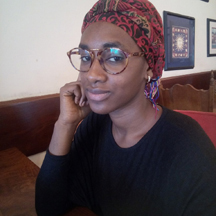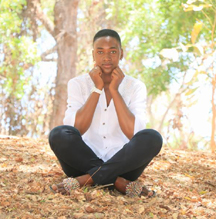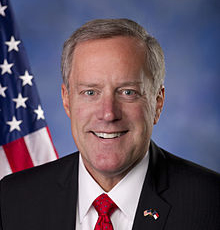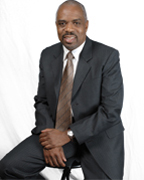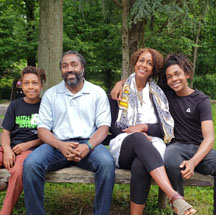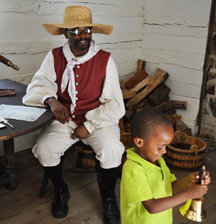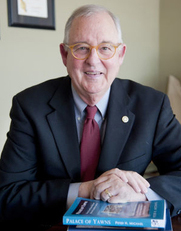Appalachia, at its greatest extent, is a region of 13 states stretching from New York south to Alabama, and appears to be one of the Whitest places in America. In fact, three centuries worth of books, articles, films, television programs (“The Beverly Hillbillies”) and now, even reality T.V., have all combined to create lasting stereotypical images of White mountain folks that many there now find offensive. African Americans that live in Appalachia, however, still remain largely unseen in "coal country." Fortunately, for Black people, history and reality combine to paint a far different picture.
In 2004, a study entitled: "A New Diversity, Race and Ethnicity in the Appalachian Region" by Kevin M. Pollard of the Population Reference Bureau reported that "In Appalachia ... African Americans remain the largest minority group by a large margin. In 2000, the region's non-Hispanic Blacks numbered nearly 1.9 million - - 67 percent of Appalachia's minority population and eight percent of all Appalachians. The inclusion of Latino Blacks added 16,000 more people to the region's Black population, and adding Blacks (both Hispanic and non-Hispanic) who marked more than one race on the 2000 census form increased the Black population in Appalachia to just under 2 million."
The roots of the majority of these Black people plunge deep into the history and culture of Appalachia and are symbolized by three figures: John Henry, the legendary character of American folklore; Booker T. Washington, the famous educator; and Carter G. Woodson, the father of African American history. And, there were lesser known, but historically significant figures such as Monk Estill and Dolly.
In his 2006 book, "Steel Drivin' Man," author Scott Reynolds Nelson assembled impressive research which he claimed proved that this fabled superhuman Black man who could swing his hammer faster and harder than any man alive and pound a steel drill into rock to place explosives to blast the way for a railroad tunnel, was a real person. The legend of John Henry says that this Black man swung his hammer so hard and so fast he even bested a steam powered automatic drill in a famous race. In one version of a ballad bearing his name, "John Henry hammered on the mountain, till his hammer was striking fire."
Nelson alleged that his real name was John William Henry, a former Union soldier, arrested and imprisoned for theft. He was leased by the West Virginia State Penitentiary for 25 cents a day to blast tunnels through the Allegheny Mountains for the Chesapeake and Ohio Railway. Nelson learned that Henry actually labored on the Lewis Tunnel in West Virginia. This was a place where steam drills competed with teams of men using hammers. Nelson believes that Henry might have died in one of those railway tunnels (the legendary John Henry had died of a burst heart after beating a steam drill).
Nelson thinks his candidate more likely died of silicosis, a lung disease caused by the inhalation of silicon dust which affected many early tunnel workers. Other historians favor other locations including the Big Bend Tunnel, also in West Virginia, or Coosa Mountain Tunnel in Alabama. Wherever this is thought to have occurred; whoever he really was, this black Thor entered the realms of myth and legend and inspired ballads, plays, and novels over the past century and a half. All of the experts do agree on the universal appeal and enduring impact of this larger than life hero who ranks alongside characters like Paul Bunyan and Pecos Bill.
As a boy, Booker T. Washington sweated in a coal mine near Malden, West Virginia; it was about half a mile up Campbell's Creek from the town. Washington worked in a drift mine, the kind that is generally on the slope of a hill, driven horizontally into a coal seam rather than by tunneling directly downward. In addition to the dangers of explosions or cave-ins, he described another peril: "the mine was divided into a large number of different 'rooms' or departments, and as I was never able to learn the locations of all these 'rooms’, I many times found myself lost in the mine. To add to the horror of being lost, sometimes my light would go out, and then if I did not happen to have a match, I would wander about in darkness until by chance I found someone to give me a light."
He soon decided that education was the way up and out of the pit. He carried a spelling book with him to the mine but seldom got a chance to read it. His mother arranged night tutoring but after a day of back breaking work in the mine (or the local salt furnace), concentration was sometimes difficult. And then, at the age of 16, Washington happily left for a far off place he'd heard of called Hampton to fulfill his destiny.
Like Booker T. Washington’s parents, Carter G. Woodson's parents had left Virginia and settled in West Virginia in search of better jobs. A teenaged Woodson wound up toiling half a dozen years in what is now the New River Gorge National River digging and hauling coal "for pennies on the ton," to make enough money to attend Douglass High School in Huntington, West Virginia.
He did four years of course work in two years. He then attended Berea College in Kentucky and went back to the New River Gorge town of Winona and taught school. He went on to graduate from the University of Chicago with a degree in history and the path of his life was forever set.
The roots of the majority of these Black people plunge deep into the history and culture of Appalachia and are symbolized by three figures: John Henry, Booker T. Washington, and Carter G. Woodson. And, there were lesser known, but historically significant figures such as Monk Estill and Dolly.
He never forgot his days in the mines. Once, a piece of slate had fallen on him, causing an injury to his head. Decades later, he often told staff members at the Association for the Study of Negro Life and History, which he had founded in 1915, "I am a coal miner and I can take almost anything."
African Americans arrived in Appalachia in several waves. Among the earliest were those, enslaved and free, who came through the Cumberland Gap, along the Wilderness Road, with the generation of Daniel Boone in the late 1700s.
Monk Estill came to Kentucky in the 1770s as a bondsman but was later freed. He made gunpowder at Boonesborough and may have taught Boone how to make it.
Estill's son, Jerry, was the first African American born in Kentucky. A Black man named Pompey, known as the "Black Shawnee" lost his life in an attack on Boonesborough. He had been a translator between Boone and the Shawnee. The Kentucky Historical Register reports that "Pompey...had a prominent role in Daniel Boone's capture and adoption by the Shawnee and in the siege of Boonesborough." First a fort and then a town, Boonesborough is considered the second oldest European-American settlement in the state.
A Black woman named Dolly, a servant of Richard Callaway, is generally regarded one of the first women at Boonesborough. A leg of the Underground Railroad ran through Appalachia from Chattanooga to Pennsylvania.
More Black Americans came after the Civil War and into the early twentieth century to work in the mines. The Black community and its culture slowly took root. An abiding symbol of its presence was the banjo, a stringed instrument of African origin. Jim Crow and lynchings stalked the land but African Americans prevailed.
In the 1990s, Frank X. Walker, an author and a professor at the University of Kentucky, created the word "Affrilachian" in a poem to remind America that there are people of African descent that have existed there with a long and proud past. Walker also founded Affrilachian Poets, a group of writers based at the university as well as a journal on Affrilachian art and culture. Walker, a Black man born in Danville, Kentucky, was poet laureate of the state in 2013.
In June 2017, POLITICO magazine carried an article and photo essay entitled "Black Appalachia" primarily focusing on the town of Lynch, Kentucky, home to 800 citizens, nearly a quarter of whom are Black. Founded in 1917 as a coal company town by the U.S. Coal and Coke Company, Lynch was named after the company's president.
The town was built at the base of Kentucky's highest mountain. The magazine and a subsequent similar article in The Washington Post in the same year described the pride the Black residents felt in their history, culture, and institutions. One Black resident of Lynch was quoted as saying: " I would love for my kids to know this place, for my grandkids to know this place."
Black Affrilachia? | Breaking the Culture of Silence | Middle Passage Commemoration
Having trouble viewing this email? Click here
Having trouble viewing this email? Click here
June 7 – June 20, 2018
On The Dock This Issue:

"Affrilachia?" - Yes, There are Black People in the Land of
Mountains, Moonshine, and Coal Mines
An abiding symbol of its presence was the banjo, a stringed instrument of African origin.
An abiding symbol of its presence was the banjo, a stringed instrument of African origin.
Breaking the Culture of Silence (Part 2 of 2)
Although I have conquered half of the battle by breaking the culture of silence, my children and I still face many challenges.
Although I have conquered half of the battle by breaking the culture of silence, my children and I still face many challenges.
White Populations Declining Fast, at Home and Abroad
The decrease in the White population is largely due to White women not having White babies.
The decrease in the White population is largely due to White women not having White babies.
Farm Bill, Immigration, and Race in the US
The bill would reduce legal immigration by roughly 40%; 8.4 percent of all immigrants in the country are Black.
The bill would reduce legal immigration by roughly 40%; 8.4 percent of all immigrants in the country are Black.
Commemoration for Millions Who Perished During the Middle Passage
Activities will take place around the world including Washington, DC; Goreé Island, Senegal; Oshun State, Nigeria; Bahia, Brazil; Havana, Cuba; and Detroit, Michigan.
Activities will take place around the world including Washington, DC; Goreé Island, Senegal; Oshun State, Nigeria; Bahia, Brazil; Havana, Cuba; and Detroit, Michigan.
Co-Parenting Discussed and Honored
Even when they lived separately on opposite ends of the United States, they used technology to bridge the family divide.
Even when they lived separately on opposite ends of the United States, they used technology to bridge the family divide.
Readers' Trends
See what is most popular in Port Of Harlem's e-mailed issue, and on our web, Pinterest, and Facebook pages.
See what is most popular in Port Of Harlem's e-mailed issue, and on our web, Pinterest, and Facebook pages.
Praising the Past
"Affrilachia?" - Yes, There are Black People in the Land of Mountains, Moonshine, and Coal Mines
By CR Gibbs
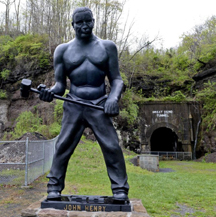
Statue of John Henry at the John Henry Historical Park at the mouth of the Great Bend Tunnel, Hinton, WV.
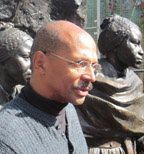
"Affrilachia?" - Yes, There are Black People in the Land of Mountains, Moonshine, and Coal Mines
By CR Gibbs

Statue of John Henry at the John Henry Historical Park at the mouth of the Great Bend Tunnel, Hinton, WV.

Publisher’s Note: In our last issue Jonsaba Jonsy Jaiteh began to tell her story of being forced into a marriage when she was just 13-years-old.
When she stood up and challenged marriage traditions, Jaiteh boldly broke the culture of silence. Later she would testify before the Gambia National Assembly and talk about the verbal beatings she endured and being sent miles away to Angola to be with her now former husband, who is 22 years her senior. Very soon after her testimony, the government banned child marriage in the West African country.
So far we have raise $50 of the $870 we need to ensure that Jaitah can complete high school and reunite with her daughter in relative peace. Here is the completion of Jonsaba’s story.
The beatings became more unpredictable and common. Once he beat me with a long portable metal electronic charger, normally used to boil water. The beating left bruises on my whole body. I took a picture of myself and sent it to my family via Viber with a note that I couldn’t continue with the marriage since my husband was treating me like an animal. My family did nothing. My auntie even insinuated that I took a razor blade to hurt myself and covered myself with blood so that I could frame my husband as a bad person.
Through another difficult birth, I delivered my daughter at home because my husband didn’t give me money to deliver in the hospital. Having a second child made it harder to manage.
After her birth, I had to manage the little money he gave me for our breakfast which was $2. From the $2, I would save $1. With my savings and money from relatives, I ordered $350 worth of materials from China, like curtains and bed sheets, and resold them. I also managed by making fried coconut and selling it to children.
After sometime, my husband moved to China for three months without giving us any support. I pressured him to help us return to The Gambia until he bought the tickets for us hesitantly.
My family shamefully accepted me. My father told me to return to my husband’s family in Senegal, but I refused. Traditionally, I was now a part of Ebrima’s family, not my birth family, so I rented a small house in The Gambia.
I still felt that I had an opportunity to renew my life and focus on the destiny I dreamed. However, it was very difficult for me since I was taking care of my children and paying all the bills alone. Eventually, my grandmother in France helped me some by paying the kids’ school fees. I started looking for job, but quickly learned that not having completed 12th grade was not helpful.
After about 10 months in The Gambia, I received a call from the Social Welfare office as they were embarking on an African Union campaign to end child marriages. They asked that I speak since my story was one of the saddest in their files since 2011. My story was all over the television and the Internet.
When she stood up and challenged marriage traditions, Jaiteh boldly broke the culture of silence. Later she would testify before the Gambia National Assembly and talk about the verbal beatings she endured and being sent miles away to Angola to be with her now former husband, who is 22 years her senior. Very soon after her testimony, the government banned child marriage in the West African country.
So far we have raise $50 of the $870 we need to ensure that Jaitah can complete high school and reunite with her daughter in relative peace. Here is the completion of Jonsaba’s story.
Breaking the Culture of Silence
The Beating
Four months later, I had an argument with my husband which ended with him beating me. After a year and three months, I conceived again.The beatings became more unpredictable and common. Once he beat me with a long portable metal electronic charger, normally used to boil water. The beating left bruises on my whole body. I took a picture of myself and sent it to my family via Viber with a note that I couldn’t continue with the marriage since my husband was treating me like an animal. My family did nothing. My auntie even insinuated that I took a razor blade to hurt myself and covered myself with blood so that I could frame my husband as a bad person.
Through another difficult birth, I delivered my daughter at home because my husband didn’t give me money to deliver in the hospital. Having a second child made it harder to manage.
After her birth, I had to manage the little money he gave me for our breakfast which was $2. From the $2, I would save $1. With my savings and money from relatives, I ordered $350 worth of materials from China, like curtains and bed sheets, and resold them. I also managed by making fried coconut and selling it to children.
After sometime, my husband moved to China for three months without giving us any support. I pressured him to help us return to The Gambia until he bought the tickets for us hesitantly.
My family shamefully accepted me. My father told me to return to my husband’s family in Senegal, but I refused. Traditionally, I was now a part of Ebrima’s family, not my birth family, so I rented a small house in The Gambia.
I still felt that I had an opportunity to renew my life and focus on the destiny I dreamed. However, it was very difficult for me since I was taking care of my children and paying all the bills alone. Eventually, my grandmother in France helped me some by paying the kids’ school fees. I started looking for job, but quickly learned that not having completed 12th grade was not helpful.
After about 10 months in The Gambia, I received a call from the Social Welfare office as they were embarking on an African Union campaign to end child marriages. They asked that I speak since my story was one of the saddest in their files since 2011. My story was all over the television and the Internet.
Telling my story created a problem between me and my grandmother. She decided to stop helping me since she felt that I had brought shame to the family name. After hearing the news, the children’s father threatened that he was going to take the kids from me. Obeying my father, I took the children to Ebrima.
However, my father decided that my husband would take our son and that I would keep our daughter. Ebrima decided to take the boy to his mom in Senegal.
We were finally divorced in 2016, my uncle spent two weeks in jail for breaking the agreement with Social Services, and I was finally able to reenter 10th grade - - but my daughter lives with my grandmother’s younger sister until I can find us a home.
The government is paying my school fees, but it cannot pay my rent. A family near my school is now hosting me. It’s been a challenge living with people I have not known long and being without my daughter, but I don’t have any choice other than to accept their kindness. Secondly, my daughter is not going to school due to a lack of funds. She is four now and sitting at my grandmother’s sister’s home admiring other children going to school.
I am thankful that my teacher Ruqayah Sesay suggested that the Port Of Harlem Gambian Education Partnership assist me in raising $720 ($60 per month) and $150 for my daughter’s annual school fee for my final year in high school.
I will continue to manage with my other expenses as I have in the past, with some family support and selling items, but the rent and daughter’s school fees are my greatest financial challenges. With your help, I will finish my high school education and be in better position to get a job to support myself and daughter, and make my dreams come true. InShallah (If God is Willing).
However, my father decided that my husband would take our son and that I would keep our daughter. Ebrima decided to take the boy to his mom in Senegal.
We were finally divorced in 2016, my uncle spent two weeks in jail for breaking the agreement with Social Services, and I was finally able to reenter 10th grade - - but my daughter lives with my grandmother’s younger sister until I can find us a home.
Not Archiving My Goals
I am finishing 11th grade now. Going back to school has not been easy seeing all my friends and even my younger siblings having completed 12th grade. Although I have conquered half of the battle by breaking the culture of silence, my children and I still face many challenges.The government is paying my school fees, but it cannot pay my rent. A family near my school is now hosting me. It’s been a challenge living with people I have not known long and being without my daughter, but I don’t have any choice other than to accept their kindness. Secondly, my daughter is not going to school due to a lack of funds. She is four now and sitting at my grandmother’s sister’s home admiring other children going to school.
I am thankful that my teacher Ruqayah Sesay suggested that the Port Of Harlem Gambian Education Partnership assist me in raising $720 ($60 per month) and $150 for my daughter’s annual school fee for my final year in high school.
I will continue to manage with my other expenses as I have in the past, with some family support and selling items, but the rent and daughter’s school fees are my greatest financial challenges. With your help, I will finish my high school education and be in better position to get a job to support myself and daughter, and make my dreams come true. InShallah (If God is Willing).
See Jaitah Interviewed on "Youth Bantaba" Facebook Live Show
(Bantaba=Gathering Place, in Mandinka)
Four years ago, it was just four states in the United States where Whites where dying faster than they were born. In 2017, that number jumped to 17. “Our analysis of the demographic factors that cause White natural decrease suggests that the pace is likely to pick up in the future,” says Rogelio Sáenz and Kenneth M. Johnson, authors of the New Hampshire University study “White Deaths Exceed Births in One-Third of U.S. States.”
And in the “Old Country,” Europe is seemingly becoming browner faster than America. Compared to the United States, European fertility rates are even lower, the population is considerably older, and there are fewer women of childbearing age. In Europe, overall deaths exceed births in seventeen countries.
Much to the chagrin to White supremacists, the prospects of a reversal are not that great. Three states reversed similar declines, California, New Mexico, and West Virginia, but for only one year.
In contrast, the Latino population in the United States is surging by a having “births exceed(ing) deaths by a considerable margin,” says the report. The Latino population is considerably younger (median age of 28.4 in 2014) and has higher fertility rates than the White population, and so Latino births exceeded deaths by a substantial margin in all fifty states and the District of Columbia in 2014.
And in the “Old Country,” Europe is seemingly becoming browner faster than America. Compared to the United States, European fertility rates are even lower, the population is considerably older, and there are fewer women of childbearing age. In Europe, overall deaths exceed births in seventeen countries.
Much to the chagrin to White supremacists, the prospects of a reversal are not that great. Three states reversed similar declines, California, New Mexico, and West Virginia, but for only one year.
In contrast, the Latino population in the United States is surging by a having “births exceed(ing) deaths by a considerable margin,” says the report. The Latino population is considerably younger (median age of 28.4 in 2014) and has higher fertility rates than the White population, and so Latino births exceeded deaths by a substantial margin in all fifty states and the District of Columbia in 2014.
The decrease in the White population is largely due to White women not having White babies. The number of White births for each White death declined from 1.20 to 1.04. The White population is aging rapidly, as reflected in a rise in median age for whites from 39 in 2000 to 43 in 2014.
White Europeans are facing the same “challenges” as European-Americans. Women born overseas contributed 27 per cent of all live births in England and Wales in 2014, and 33 per cent of births had at least one immigrant parent - - a figure which has more than doubled since the 1990s, reports the United Kingdom’s Daily Mail.
The American study also concluded that drug overdose and suicides among working class Whites is speeding up the time that Whites will become a minority in the United States. “Drug-induced deaths (including intentional suicide deaths and accidental drug overdose deaths) outnumbered motor vehicle accident deaths among Whites in forty-one states in 2014 compared to ten states in 2004,” +states Sáenz and Johnson. By 2050 whites will constitute less than half (47 percent) of the U.S. population.
Note: From the Washington Post - The Future is African — and the United States is Not Prepared
Beginning in 2035, the number of young people reaching working age in Africa will exceed that of the rest of the world combined.
White Europeans are facing the same “challenges” as European-Americans. Women born overseas contributed 27 per cent of all live births in England and Wales in 2014, and 33 per cent of births had at least one immigrant parent - - a figure which has more than doubled since the 1990s, reports the United Kingdom’s Daily Mail.
The American study also concluded that drug overdose and suicides among working class Whites is speeding up the time that Whites will become a minority in the United States. “Drug-induced deaths (including intentional suicide deaths and accidental drug overdose deaths) outnumbered motor vehicle accident deaths among Whites in forty-one states in 2014 compared to ten states in 2004,” +states Sáenz and Johnson. By 2050 whites will constitute less than half (47 percent) of the U.S. population.
Note: From the Washington Post - The Future is African — and the United States is Not Prepared
Beginning in 2035, the number of young people reaching working age in Africa will exceed that of the rest of the world combined.
A recent farm bill fell apart in a stunning 213-198 defeat not just because Republicans didn’t care for its content, but also because of what it represented. A bloc of conservatives, led by Rep. Mark Meadows of North Carolina, the House Freedom Caucus chairman, rallied votes against it because it was a piece of legislation they could use to get their way on another matter: A bill that would reduce legal immigration by roughly 40% and offer no protections for the young immigrants who were brought to the country illegally as children, known as Dreamers.
House conservatives have been seeking a vote sponsored by Rep. Bob Goodlatte of Virginia (he represents Virginia's 6th congressional district, which is rural and more than 80 percent White) and backed by the White House for months and would affect Black immigrants, too.
According to the Center for American Progress, 8.4 percent of all immigrants in the country are Black and come from a diverse set of places. Just less than half-48 percent-of all Black immigrants come from the Caribbean, 43 percent from African countries, and 3.6 percent from South America.
House conservatives have been seeking a vote sponsored by Rep. Bob Goodlatte of Virginia (he represents Virginia's 6th congressional district, which is rural and more than 80 percent White) and backed by the White House for months and would affect Black immigrants, too.
According to the Center for American Progress, 8.4 percent of all immigrants in the country are Black and come from a diverse set of places. Just less than half-48 percent-of all Black immigrants come from the Caribbean, 43 percent from African countries, and 3.6 percent from South America.
The largest individual home countries of Black immigrants in the United States today are Jamaica (693,000), Haiti (654,000), Nigeria (304,000), Ethiopia (237,000), and Trinidad and Tobago (171,000). Among undocumented immigrants, seven of 100 are of African descent says UndocBlack.
Saikou Suwareh Jabai, publisher of The Gambia-based publication The Stone Circle, says he does not really understand why demographic changes should affect European and American immigration policies. He told Port Of Harlem, “The US government should rather focus on the prospects and potentials of immigration than formulating unjust policies which will actually bear no fruit. Migration is as old as man and as such, it should be seen as a positive tool for development.”
Saikou Suwareh Jabai, publisher of The Gambia-based publication The Stone Circle, says he does not really understand why demographic changes should affect European and American immigration policies. He told Port Of Harlem, “The US government should rather focus on the prospects and potentials of immigration than formulating unjust policies which will actually bear no fruit. Migration is as old as man and as such, it should be seen as a positive tool for development.”
The African Diaspora Ancestral Commemoration Institute (ADACI) will hold commemoration activities honoring the millions of African ancestors who perished during the Middle Passage (the Maafa) and those who survived. Activities will take place around the world including Washington, DC; Goreé Island, Senegal; Oshun State, Nigeria; Bahia, Brazil; Havana, Cuba; and Detroit, Michigan.
In Washington, the 26th Annual International African Ancestral takes place Saturday, June 9, 9:30a-2:00p and Sunday, June 10, 12:30p-4:30p. The activities take place in Anacostia and on The National Mall.
The ADACI 2018 “Walking in the Footsteps of the Ancestors” awards will be presented at Union Temple Baptist Church to Vincent DeForest, retired official from the National Park Service; Dr. El Senzengakulu Zulu, civil rights activist and Director of Ujamaa Shule, a Black independent school in Washington, DC; Vernard Gray, arts activist, entrepreneur and producer; and Wayne A. Young, publisher of the on-line magazine “Port of Harlem” and President of the non-profit Port Of Harlem Gambian Education Partnership, which has been creating connection with Gambians since 2002.
In Washington, the 26th Annual International African Ancestral takes place Saturday, June 9, 9:30a-2:00p and Sunday, June 10, 12:30p-4:30p. The activities take place in Anacostia and on The National Mall.
The ADACI 2018 “Walking in the Footsteps of the Ancestors” awards will be presented at Union Temple Baptist Church to Vincent DeForest, retired official from the National Park Service; Dr. El Senzengakulu Zulu, civil rights activist and Director of Ujamaa Shule, a Black independent school in Washington, DC; Vernard Gray, arts activist, entrepreneur and producer; and Wayne A. Young, publisher of the on-line magazine “Port of Harlem” and President of the non-profit Port Of Harlem Gambian Education Partnership, which has been creating connection with Gambians since 2002.
The ADACI “Sister of Strength” awards will be presented to Ateya Ball-Lacy, activist educator and African dance professional and Nataleje Oure for outstanding community service. The ADACI “Brothers of Service” award will be presented to Majeshi ya Mungu of the men at Union Temple Baptist Church.
After the awards ceremony, a drum procession from Union Temple Baptist Church, 1225 W Street, SE, DC, to the Anacostia River takes place for a spiritual healing ceremony. Melvin Deal, founder and director of the African Heritage Dancers & Drummers, will lead participants from Union Temple to the Anacostia River. Attendees are asked to wear white clothing. A post reception takes place at We-ACT radio, 1918 Martin Luther King, Jr. Avenue, around 1:30p.
The commemoration continues Sunday, June 10, 12:30p-4:30p, for a screening and discussion of the documentary film “Footprints of Pan Africanism” at the Smithsonian National Museum of African Art, 950 Independence Avenue, SW, DC. The film chronicles the lives of African Americans who emigrated to Ghana following Kwame Nkrumah’s call to help rebuild the newly independent country and to create a liberated Pan-African territory. A panel discussion will follow the screening.
After the awards ceremony, a drum procession from Union Temple Baptist Church, 1225 W Street, SE, DC, to the Anacostia River takes place for a spiritual healing ceremony. Melvin Deal, founder and director of the African Heritage Dancers & Drummers, will lead participants from Union Temple to the Anacostia River. Attendees are asked to wear white clothing. A post reception takes place at We-ACT radio, 1918 Martin Luther King, Jr. Avenue, around 1:30p.
The commemoration continues Sunday, June 10, 12:30p-4:30p, for a screening and discussion of the documentary film “Footprints of Pan Africanism” at the Smithsonian National Museum of African Art, 950 Independence Avenue, SW, DC. The film chronicles the lives of African Americans who emigrated to Ghana following Kwame Nkrumah’s call to help rebuild the newly independent country and to create a liberated Pan-African territory. A panel discussion will follow the screening.
A passionate group gathered for the first annual "Inspiring Fathers, Celebrating Co-Parenting” awards and panel discussion program in Washington, DC last Saturday. The award recipients were Sunshine Muse and Yohance Maqubela.
When the couple realized their marriage was coming apart, they also realized the need to do whatever it took to protect their children. “Initially, it was very difficult,” confessed Maqubela. “No one day was like the next. The feeling and understanding we had was things will get better,” he continued.
Even when they lived separately on opposite ends of the United States, they used technology to bridge the family divide. “Working together is important because we have these kids and we love them,” added Muse. “Not working together would be a deficit for them,” she continued.
During the event’s panel discussion, A. Scott Bolden, who was inducted into the Washington Bar Association Hall of Fame this week, told his personal story about co-parenting three daughters, after divorcing of his wife and never marrying the girlfriend who had his first child, which he did not meet until she was 19- years-old and pregnant with his grandchild.
When the couple realized their marriage was coming apart, they also realized the need to do whatever it took to protect their children. “Initially, it was very difficult,” confessed Maqubela. “No one day was like the next. The feeling and understanding we had was things will get better,” he continued.
Even when they lived separately on opposite ends of the United States, they used technology to bridge the family divide. “Working together is important because we have these kids and we love them,” added Muse. “Not working together would be a deficit for them,” she continued.
During the event’s panel discussion, A. Scott Bolden, who was inducted into the Washington Bar Association Hall of Fame this week, told his personal story about co-parenting three daughters, after divorcing of his wife and never marrying the girlfriend who had his first child, which he did not meet until she was 19- years-old and pregnant with his grandchild.
DC Deputy Mayor HyeSook Chung talked about co-parenting inside a marriage and the way she and her husband have had to adjust their roles because of career obligations. Ironically, says event coordinator Jonetta Rose Barras, “their children were not happy when either of the parents were not present and available enough to them.” Barras is head of Esther Productions, noted mostly for its Fatherless Daughter Reconciliation programs.
Dr. James Ballard, a clinical psychologist, caused a stir when he said, “It might be the case that fathers are becoming obsolete.” After the progam, he told Port Of Harlem that his point was that the traditional roles of fatherhood are changing such as having to go out and hunt for the family’s food and that a fatherless family can be a healthy environment.
Frank Love, who co-sponsored the event with Barras and Port Of Harlem magazine, moderated the panel and weaved into the discussion his personal story of parenting six children and going through two marriages. Councilmember Kenyan R. McDuffie also participated.
“The panel and program award further our mission of working toward making people feel whole and to reduce the trauma children face when parents divorce or never marry,” said Barras.
See Video of Sunshine Muse and Yohance Maqubela discuss their challenge and solution.
Dr. James Ballard, a clinical psychologist, caused a stir when he said, “It might be the case that fathers are becoming obsolete.” After the progam, he told Port Of Harlem that his point was that the traditional roles of fatherhood are changing such as having to go out and hunt for the family’s food and that a fatherless family can be a healthy environment.
Frank Love, who co-sponsored the event with Barras and Port Of Harlem magazine, moderated the panel and weaved into the discussion his personal story of parenting six children and going through two marriages. Councilmember Kenyan R. McDuffie also participated.
“The panel and program award further our mission of working toward making people feel whole and to reduce the trauma children face when parents divorce or never marry,” said Barras.
See Video of Sunshine Muse and Yohance Maqubela discuss their challenge and solution.
Washington
"The Remains"
Studio Theater
14 & P Streets, NW
Now through Sun, Jun 24, $
The Vagrant Trilogy
Mosaic Theater
@The Atlas Performing Arts Theater
1333 H St, NE
Wed, Jun 6-Sun, Jul 1, $
East River Jazz | Be Mo Jazz
Pan Africanism: Protests Songs from Around the African Diaspora
We Act Radio
1918 Martin Luther King Avenue, SE
Fri, Jun 8, 7:30p, $20
Chowan Discovery Fundraiser
5203 14th Street, NW
Sat, Jun 9, 6p-until, $
26th Annual International African Ancestral
Awards Ceremony/Walk/Reception
Union Temple Baptist Church/Anacostia River/We-Act Radio
1225 W Street, SE
Sat, Jun 9, 9:30a-2:00p, free
Screening: “Footprints of Pan-Africanism”
Smithsonian National Museum of African Art
950 Independence Avenue, SW
Sun, June 10, 12:30p-4:30p, free
American Roots Concert Series: A Juneteenth Celebration with Ben Hunter & Joe Seamons
The Hill Center
921 Pennsylvania Avenue, SE
Tue, Jun 19, 7:30p, $15-$20
Baltimore
Colonial Market Fair
(Tradesmen, Craftsmen, Music, Children's Activities)
Benjamin Banneker Historical Park and Museum
300 Oella Ave
Catonsville, MD
Sat, Jun 9-Sun, Jun 10, 10a-4p, free
"The Remains"
Studio Theater
14 & P Streets, NW
Now through Sun, Jun 24, $
The Vagrant Trilogy
Mosaic Theater
@The Atlas Performing Arts Theater
1333 H St, NE
Wed, Jun 6-Sun, Jul 1, $
East River Jazz | Be Mo Jazz
Pan Africanism: Protests Songs from Around the African Diaspora
We Act Radio
1918 Martin Luther King Avenue, SE
Fri, Jun 8, 7:30p, $20
Chowan Discovery Fundraiser
5203 14th Street, NW
Sat, Jun 9, 6p-until, $
26th Annual International African Ancestral
Awards Ceremony/Walk/Reception
Union Temple Baptist Church/Anacostia River/We-Act Radio
1225 W Street, SE
Sat, Jun 9, 9:30a-2:00p, free
Screening: “Footprints of Pan-Africanism”
Smithsonian National Museum of African Art
950 Independence Avenue, SW
Sun, June 10, 12:30p-4:30p, free
American Roots Concert Series: A Juneteenth Celebration with Ben Hunter & Joe Seamons
The Hill Center
921 Pennsylvania Avenue, SE
Tue, Jun 19, 7:30p, $15-$20
Baltimore
Colonial Market Fair
(Tradesmen, Craftsmen, Music, Children's Activities)
Benjamin Banneker Historical Park and Museum
300 Oella Ave
Catonsville, MD
Sat, Jun 9-Sun, Jun 10, 10a-4p, free
Gary/Chicago
Father’s Day Brunch
Gary SouthShore RailCats
US Steel Yard
1 Stadium Plaza
Sun, Jun 17, 10:30a-12p & 2p game, $20
Memphis
Memphis Tri-State Jobs For All Town Hall Meeting
Martin Luther King Jr Labor Center Afscme Local 1733
485 Beale St
Sat, Jun 9, 8:30a-3:30p, free
Philadelphia
Odunde Festival
23rd and South Streets
Sun, Jun 10, 10a-8p, free
Wilmington, DE
Clifford Brown Jazz Festival
Rodney Square
1000 N Market St
Wed, Jun 17-Sat, Jun 24, free
Live Stream
By Any Ink Necessary
Wayne Young being interview by Judine Slaughter
Sun, Jun10, 4p-5p, free
Coming
Hinton, WV
John Henry Days
Fri, Jul 13-Sun, Jul 15, free
Gary, IN
R&R Jamaican Beach Party
US Steel Yard
Sat, Jul 21,$
Father’s Day Brunch
Gary SouthShore RailCats
US Steel Yard
1 Stadium Plaza
Sun, Jun 17, 10:30a-12p & 2p game, $20
Memphis
Memphis Tri-State Jobs For All Town Hall Meeting
Martin Luther King Jr Labor Center Afscme Local 1733
485 Beale St
Sat, Jun 9, 8:30a-3:30p, free
Philadelphia
Odunde Festival
23rd and South Streets
Sun, Jun 10, 10a-8p, free
Wilmington, DE
Clifford Brown Jazz Festival
Rodney Square
1000 N Market St
Wed, Jun 17-Sat, Jun 24, free
Live Stream
By Any Ink Necessary
Wayne Young being interview by Judine Slaughter
Sun, Jun10, 4p-5p, free
Coming
Hinton, WV
John Henry Days
Fri, Jul 13-Sun, Jul 15, free
Gary, IN
R&R Jamaican Beach Party
US Steel Yard
Sat, Jul 21,$
On Facebook

Chuck Wheeler's Vienna Hot Dog Stand
Celebrates 60 Years
The Village Shopping Center - Gary, IN


Chuck Wheeler's Vienna Hot Dog Stand
Celebrates 60 Years
The Village Shopping Center - Gary, IN
Advertisers | Contact Us | Events | Links | Media Kit | Our Company | Payments Pier
Press Room | Print Cover Stories Archives | Electronic Issues and Talk Radio Archives | Writer's Guidelines






